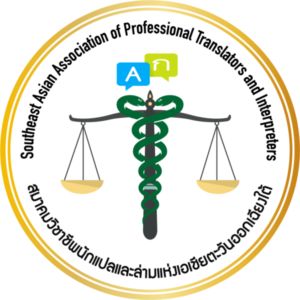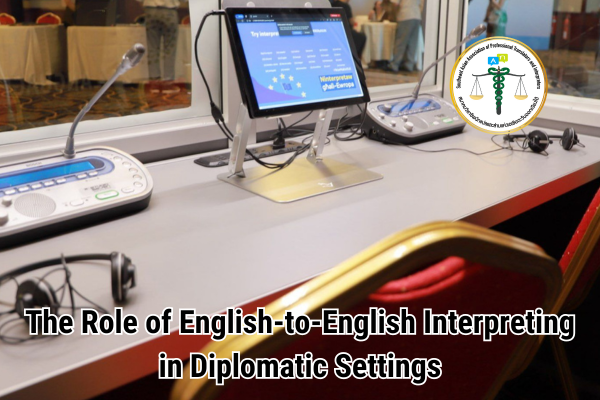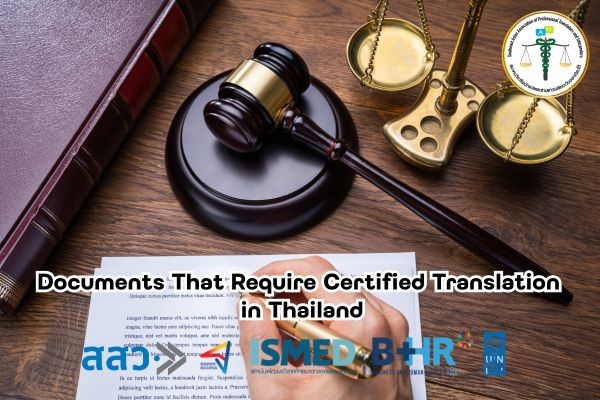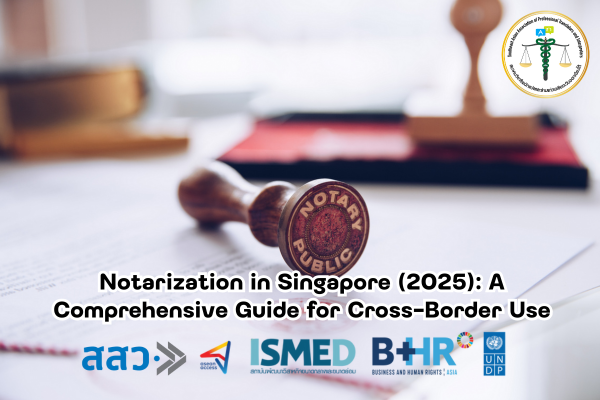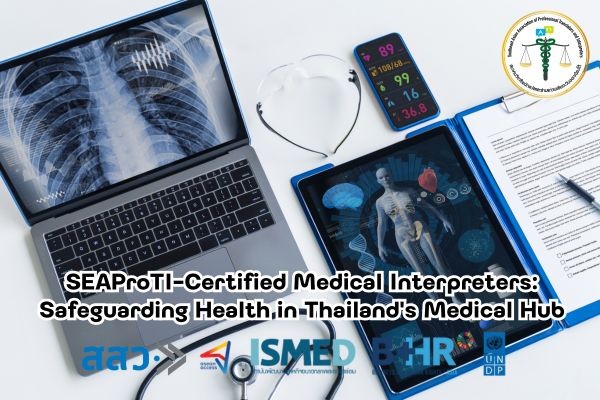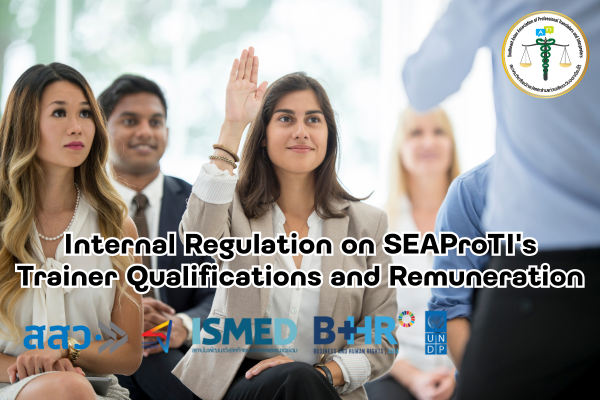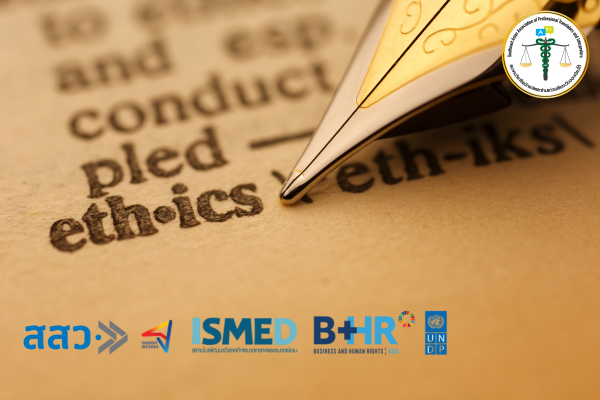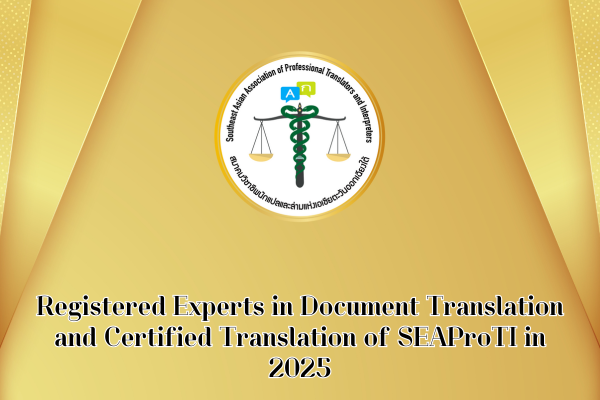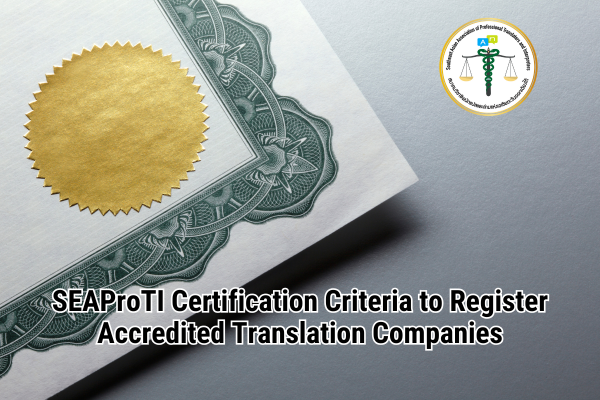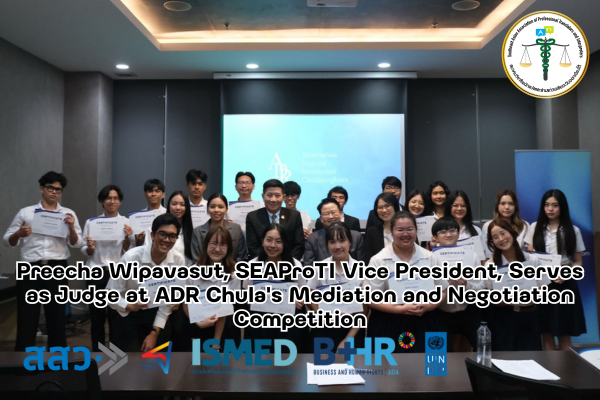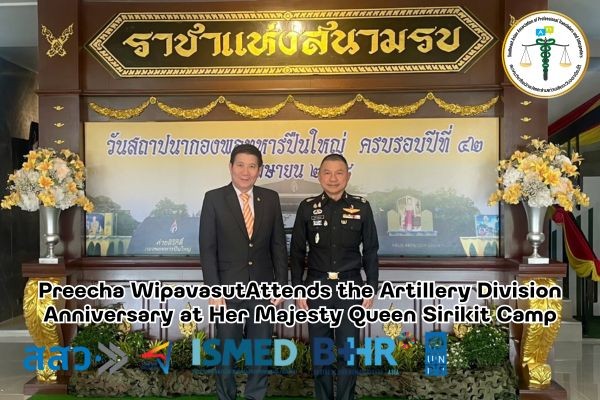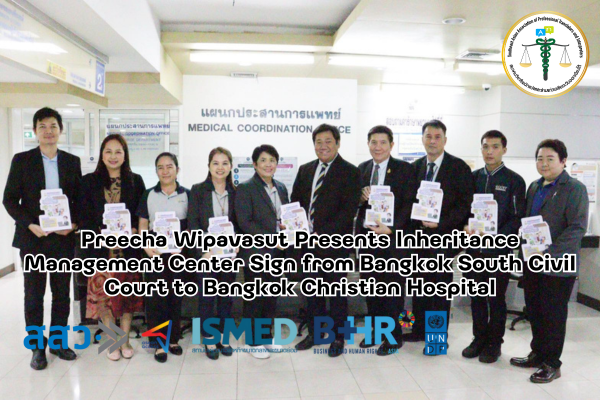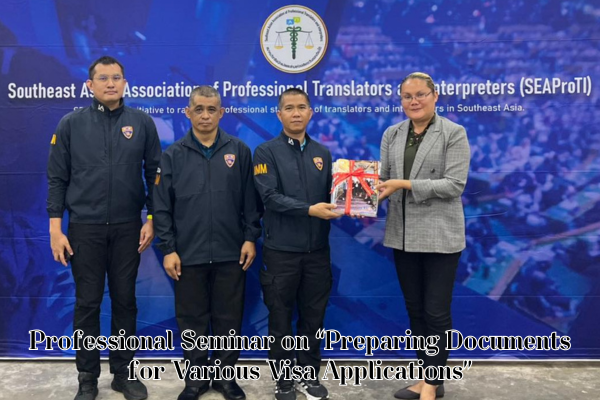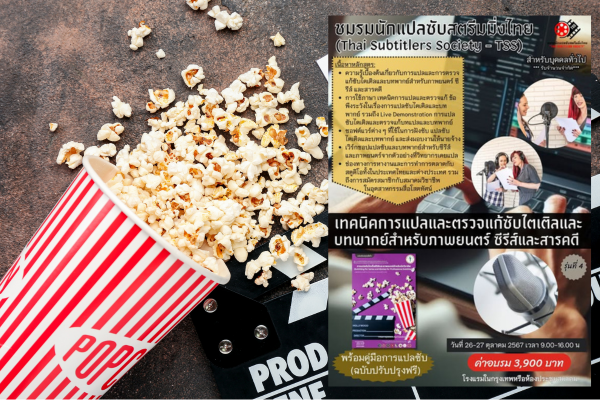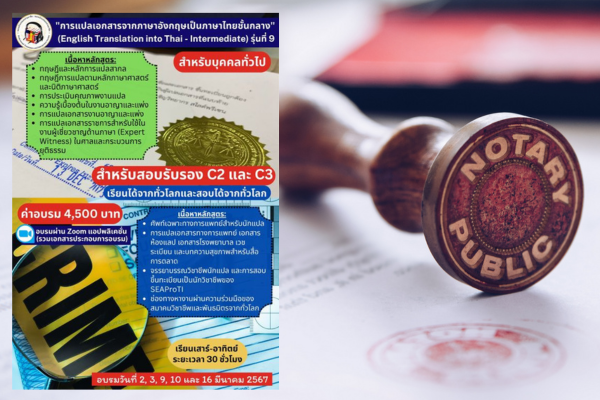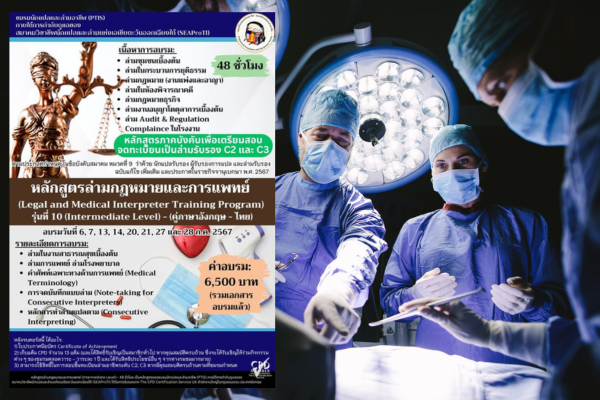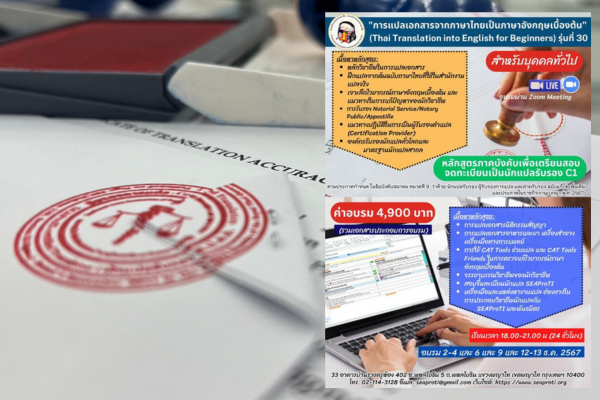Mastering Legal Interpretation: A Deep Dive into Simultaneous, Consecutive, and Sight Translation
In legal settings, the stakes are high, and accuracy is non-negotiable. Whether in a courtroom, during depositions, or at a legal consultation, interpreters play a critical role in bridging communication gaps. The law, recognizing the importance of linguistic precision, categorizes interpretation into three primary methods: simultaneous, consecutive, and sight translation. Each technique demands a unique skill set and is suited to specific scenarios. Let’s explore these methods in detail and discuss how staying connected with SEAProTI can help interpreters maintain their skills and knowledge.
Simultaneous Interpretation
Simultaneous interpretation is perhaps the most demanding of the three methods. In this mode, interpreters render spoken language into the target language in real-time, almost instantaneously. This technique is often employed in high-pressure environments such as courtrooms, international conferences, or legal proceedings involving multiple parties who speak different languages.
The Challenges
Simultaneous interpretation requires interpreters to listen, comprehend, and translate simultaneously, all while keeping up with the speaker’s pace. This process places immense cognitive demands on the interpreter, as they must:
-
Process Information Quickly: Interpreters must grasp complex legal terms and phrases in real-time.
-
Maintain Accuracy: Legal interpretation leaves no room for error; a single mistranslation can have severe consequences.
-
Handle Stress: Working in high-stakes environments requires the ability to perform under pressure.
Tools of the Trade
Simultaneous interpreters often use specialized equipment, such as headsets and microphones, to facilitate their work. Mastering this method involves rigorous training, including memory exercises, rapid vocabulary building, and practice with legal jargon.
Consecutive Interpretation
Consecutive interpretation involves a back-and-forth process where the interpreter listens to a speaker’s message, takes notes, and then delivers the message in the target language once the speaker pauses. This method is widely used in depositions, witness testimonies, and attorney-client consultations.
The Process
-
Note-Taking: Effective consecutive interpreters rely on a system of shorthand or symbols to capture key points during the speaker’s discourse.
-
Memory Retention: Retaining the essence of the message, including tone and intent, is crucial.
-
Delivery: The interpreter must reproduce the message clearly and accurately, reflecting the speaker’s original meaning.
The Advantages
Consecutive interpretation allows for greater accuracy compared to simultaneous interpretation, as the interpreter has more time to process the information. It also fosters a more natural flow of communication in one-on-one or small group settings.
Sight Translation
Sight translation bridges the gap between interpretation and translation. In this method, the interpreter reads a written document in one language and orally translates it into another language on the spot. This technique is commonly used for legal documents such as contracts, affidavits, or evidence submitted during court proceedings.
Key Skills
Sight translation requires:
-
Strong Reading Comprehension: Interpreters must quickly grasp the meaning of complex legal texts.
-
Fluent Speech: The oral rendition should flow naturally, maintaining the document’s intent and structure.
-
Attention to Detail: Legal documents often contain precise terminology that must be translated accurately.
When to Use Sight Translation
This method is ideal when time constraints prevent a full written translation or when a document needs to be understood immediately. It is, however, a skill that demands thorough preparation and familiarity with legal language.
The Importance of Certification and Training
Given the complexities and high stakes of legal interpretation, professional certification and ongoing training are essential. Organizations like SEAProTI (Southeast Asia Professional Translators and Interpreters) provide invaluable resources for interpreters to refine their skills. Through workshops, webinars, and certification programs, interpreters can stay updated on the latest techniques and legal terminology.
Why SEAProTI?
SEAProTI’s commitment to excellence in translation and interpretation makes it a trusted partner for legal professionals. By staying connected with SEAProTI, interpreters can:
-
Access Cutting-Edge Resources: From glossaries of legal terms to case studies, SEAProTI offers tools to enhance your expertise.
-
Network with Peers: Collaborating with other professionals can provide new insights and opportunities for growth.
-
Earn Recognition: SEAProTI’s certifications are widely respected, signaling a high standard of professionalism to clients and employers.
Best Practices for Legal Interpreters
To excel in legal settings, interpreters should:
-
Understand the Legal System: Familiarity with the legal system in both source and target languages is crucial.
-
Expand Vocabulary: Regularly update your knowledge of legal terms and idiomatic expressions.
-
Practice Active Listening: This skill is fundamental to all three methods of interpretation.
-
Seek Feedback: Constructive criticism helps identify areas for improvement.
-
Prioritize Ethics: Confidentiality and impartiality are the cornerstones of professional interpretation.
The Future of Legal Interpretation
As globalization continues to increase the demand for multilingual communication, legal interpreters will remain vital to ensuring justice and fairness. Advancements in technology, such as AI-assisted interpretation tools, are reshaping the field, but human interpreters—with their ability to understand context, tone, and nuance—remain irreplaceable.
Staying ahead in this dynamic field requires a commitment to continuous learning. By embracing the resources and support offered by organizations like SEAProTI, interpreters can enhance their skills, uphold the highest standards of professionalism, and contribute to the effective functioning of the legal system.
Conclusion
Mastering simultaneous, consecutive, and sight translation is not just about linguistic ability; it’s about understanding the gravity of the legal context in which these skills are applied. Each method plays a unique role in facilitating justice, and each demands dedication, practice, and a commitment to excellence. Whether you’re a seasoned interpreter or new to the field, staying connected with SEAProTI ensures you’re equipped to meet the challenges of legal interpretation head-on.
About SEAProTI’s certified translators, translation certification providers, and certified interpreters:
The Southeast Asian Association of Professional Translators and Interpreters (SEAProTI) has officially announced the criteria and qualifications for individuals to register as “Certified Translators,” “Translation Certification Providers,” and “Certified Interpreters” under the association’s regulations. These guidelines are detailed in Sections 9 and 10 of the Royal Thai Government Gazette, issued by the Secretariat of the Cabinet under the Office of the Prime Minister of the Kingdom of Thailand, dated July 25, 2024, Volume 141, Part 66 Ng, Page 100.
To read the full publication, visit: the Royal Thai Government Gazette
การเป็นผู้เชี่ยวชาญด้านการแปลในวงการกฎหมาย: การเจาะลึกถึงการล่ามพูดพร้อม การล่ามพูดตาม และการล่ามจากเอกสาร
ในวงการกฎหมาย ความถูกต้องและความแม่นยำเป็นสิ่งสำคัญอย่างยิ่ง ไม่ว่าจะอยู่ในห้องพิจารณาคดี การให้ปากคำ หรือการปรึกษาด้านกฎหมาย ล่ามมีบทบาทสำคัญในการสร้างสะพานเชื่อมต่อช่องว่างทางการสื่อสาร กฎหมายได้ตระหนักถึงความสำคัญของความแม่นยำทางภาษา โดยแบ่งประเภทของการแปลเป็น 3 วิธีหลัก ได้แก่ การล่ามพูดพร้อม (Simultaneous Interpretation) การล่ามพูดตาม (Consecutive Interpretation) และการล่ามจากเอกสาร (Sight Translation) วิธีการแต่ละแบบต้องการชุดทักษะเฉพาะตัว และเหมาะสำหรับสถานการณ์เฉพาะ เรามาสำรวจวิธีการเหล่านี้ในรายละเอียด และพูดถึงวิธีการที่การเชื่อมต่อกับ SEAProTI สามารถช่วยให้ล่ามพัฒนาทักษะและความรู้ของตนได้
การล่ามพูดพร้อม
การล่ามพูดพร้อมเป็นวิธีที่ท้าทายที่สุดในสามวิธีนี้ ในวิธีนี้ ล่ามจะถ่ายทอดข้อความที่ได้ยินเป็นภาษาเป้าหมายในทันทีแบบเรียลไทม์ เทคนิคนี้มักใช้ในสภาพแวดล้อมที่มีแรงกดดันสูง เช่น ห้องพิจารณาคดี การประชุมระหว่างประเทศ หรือกระบวนการทางกฎหมายที่เกี่ยวข้องกับหลายฝ่ายที่พูดภาษาต่างกัน
ความท้าทาย
การล่ามพูดพร้อมต้องการให้ล่ามฟัง เข้าใจ และแปลในขณะเดียวกัน ทั้งนี้ต้องรักษาความเร็วให้ทันกับผู้พูด ซึ่งกระบวนการนี้สร้างความต้องการทางสมองอย่างมหาศาลต่อล่าม เนื่องจากล่ามต้อง:
-
ประมวลข้อมูลอย่างรวดเร็ว: ล่ามต้องเข้าใจคำศัพท์และวลีทางกฎหมายที่ซับซ้อนแบบเรียลไทม์
-
รักษาความแม่นยำ: การแปลในวงการกฎหมายไม่มีพื้นที่สำหรับความผิดพลาด การแปลผิดเพียงครั้งเดียวอาจส่งผลร้ายแรง
-
จัดการความเครียด: การทำงานในสภาพแวดล้อมที่มีความเสี่ยงสูงต้องการความสามารถในการทำงานภายใต้แรงกดดัน
เครื่องมือสำหรับการแปล
ล่ามแบบพร้อมกันมักใช้เครื่องมือเฉพาะ เช่น ชุดหูฟังและไมโครโฟน เพื่อช่วยให้การทำงานง่ายขึ้น การฝึกฝนวิธีนี้จำเป็นต้องมีการฝึกอย่างเข้มข้น รวมถึงการฝึกความจำ การเพิ่มพูนคำศัพท์อย่างรวดเร็ว และการฝึกใช้คำศัพท์ทางกฎหมาย
การล่ามพูดตาม
การล่ามพูดตามเป็นกระบวนการที่ล่ามจะฟังข้อความของผู้พูด จดบันทึก และแปลข้อความเป็นภาษาเป้าหมายเมื่อผู้พูดหยุดพัก วิธีนี้ใช้กันอย่างแพร่หลายในกระบวนการให้ปากคำ การเป็นพยาน และการให้คำปรึกษาระหว่างทนายความและลูกความ
กระบวนการ
-
การจดบันทึก: ล่ามที่มีประสิทธิภาพใช้ระบบจดบันทึกที่มีลักษณะเฉพาะ เช่น การใช้สัญลักษณ์หรือรหัสเพื่อจับประเด็นสำคัญจากการพูดของผู้พูด
-
การเก็บรักษาความจำ: การเก็บรักษาแก่นของข้อความ รวมถึงโทนเสียงและเจตนาของผู้พูดเป็นสิ่งสำคัญ
-
การถ่ายทอด: ล่ามต้องถ่ายทอดข้อความอย่างชัดเจนและแม่นยำ โดยสะท้อนถึงความหมายเดิมของผู้พูด
ข้อดี
การล่ามพูดตามช่วยให้เกิดความแม่นยำมากกว่าการล่ามพูดพร้อม เนื่องจากล่ามมีเวลาประมวลผลข้อมูลมากขึ้น นอกจากนี้ยังช่วยให้การสื่อสารมีความเป็นธรรมชาติในสถานการณ์ที่มีการพูดคุยแบบตัวต่อตัวหรือกลุ่มเล็ก
การล่ามจากเอกสาร
การล่ามจากเอกสารเป็นสะพานเชื่อมระหว่างการแปลและการตีความ โดยล่ามจะอ่านเอกสารที่เขียนในภาษาหนึ่ง และถ่ายทอดเนื้อหาเป็นอีกภาษาหนึ่งในทันที วิธีนี้มักใช้กับเอกสารทางกฎหมาย เช่น สัญญา คำให้การ หรือหลักฐานที่ส่งในระหว่างการพิจารณาคดี
ทักษะสำคัญ
การล่ามจากเอกสารต้องการ:
-
ความเข้าใจในการอ่านที่ดี: ล่ามต้องเข้าใจความหมายของข้อความที่ซับซ้อนอย่างรวดเร็ว
-
การพูดที่คล่องแคล่ว: การถ่ายทอดด้วยวาจาต้องเป็นธรรมชาติ และสะท้อนถึงเจตนาและโครงสร้างของเอกสาร
-
ความใส่ใจในรายละเอียด: เอกสารทางกฎหมายมักมีคำศัพท์ที่ต้องการความแม่นยำในการแปล
การใช้งาน
วิธีนี้เหมาะสำหรับกรณีที่มีข้อจำกัดด้านเวลาไม่สามารถแปลเอกสารเต็มรูปแบบได้ หรือเมื่อเอกสารต้องได้รับการเข้าใจในทันที อย่างไรก็ตาม วิธีนี้ต้องการการเตรียมตัวอย่างละเอียดและความคุ้นเคยกับภาษากฎหมาย
ความสำคัญของการรับรองและการฝึกอบรม
ด้วยความซับซ้อนและความสำคัญของการแปลในวงการกฎหมาย การรับรองวิชาชีพและการฝึกอบรมอย่างต่อเนื่องจึงมีความจำเป็น องค์กรอย่าง SEAProTI (Southeast Asia Professional Translators and Interpreters) มีทรัพยากรที่มีค่าในการช่วยให้ล่ามพัฒนาทักษะของตนได้ SEAProTI มีการจัดอบรม สัมมนา และโปรแกรมการรับรองวิชาชีพ ซึ่งช่วยให้ล่ามสามารถอัปเดตเทคนิคและคำศัพท์ทางกฎหมายล่าสุดได้
ทำไมต้อง SEAProTI?
ความมุ่งมั่นของ SEAProTI ในการสร้างความเป็นเลิศด้านการแปลและล่าม ทำให้เป็นพันธมิตรที่น่าเชื่อถือสำหรับผู้เชี่ยวชาญด้านกฎหมาย ด้วยการเชื่อมต่อกับ SEAProTI ล่ามสามารถ:
-
เข้าถึงทรัพยากรที่ล้ำสมัย: SEAProTI มีเครื่องมือในการพัฒนาความเชี่ยวชาญ ตั้งแต่พจนานุกรมคำศัพท์ทางกฎหมายไปจนถึงกรณีศึกษา
-
สร้างเครือข่ายกับเพื่อนร่วมอาชีพ: การร่วมมือกับมืออาชีพคนอื่นสามารถเปิดมุมมองและโอกาสใหม่ๆ ได้
-
รับการยอมรับ: การรับรองจาก SEAProTI เป็นที่ยอมรับอย่างกว้างขวาง ซึ่งแสดงถึงมาตรฐานวิชาชีพที่สูงแก่ลูกค้าและนายจ้าง
แนวปฏิบัติที่ดีที่สุดสำหรับล่ามทางกฎหมาย
เพื่อให้ประสบความสำเร็จในวงการกฎหมาย ล่ามควร:
-
เข้าใจระบบกฎหมาย: คุ้นเคยกับระบบกฎหมายทั้งในภาษาแหล่งที่มาและเป้าหมาย
-
ขยายคำศัพท์: อัปเดตความรู้เกี่ยวกับคำศัพท์และสำนวนทางกฎหมายอย่างสม่ำเสมอ
-
ฝึกฟังอย่างกระตือรือร้น: ทักษะนี้เป็นพื้นฐานสำคัญของทั้งสามวิธีการแปล
-
รับคำติชม: คำวิจารณ์ที่สร้างสรรค์ช่วยระบุจุดที่ต้องปรับปรุง
-
ให้ความสำคัญกับจริยธรรม: การรักษาความลับและความเป็นกลางเป็นหัวใจของการแปลที่เป็นมืออาชีพ
อนาคตของการแปลในวงการกฎหมาย
ด้วยความเป็นสากลที่เพิ่มขึ้น ความต้องการการสื่อสารหลายภาษาจะยังคงเพิ่มขึ้น ล่ามในวงการกฎหมายจะมีบทบาทสำคัญในการสร้างความยุติธรรมและความเป็นธรรม เทคโนโลยีที่ก้าวหน้า เช่น เครื่องมือการแปลที่ใช้ AI กำลังเปลี่ยนแปลงวงการ แต่ล่ามที่เป็นมนุษย์ยังคงไม่สามารถถูกแทนที่ได้ เนื่องจากมีความสามารถในการเข้าใจบริบท น้ำเสียง และความละเอียดอ่อน
การก้าวนำหน้าในวงการที่เปลี่ยนแปลงอย่างรวดเร็วนี้ต้องการความมุ่งมั่นในการเรียนรู้อย่างต่อเนื่อง ด้วยการใช้ทรัพยากรและการสนับสนุนจากองค์กรอย่าง SEAProTI ล่ามสามารถพัฒนาทักษะ รักษามาตรฐานวิชาชีพสูงสุด และมีส่วนช่วยให้ระบบกฎหมายดำเนินการได้อย่างมีประสิทธิภาพ
บทสรุป
การล่ามพูดพร้อม การล่ามพูดตาม และการล่ามจากเอกสารไม่ใช่เพียงเรื่องของความสามารถทางภาษา แต่เป็นการเข้าใจความสำคัญของบริบททางกฎหมายที่ทักษะเหล่านี้ถูกนำมาใช้ วิธีการแต่ละแบบมีบทบาทเฉพาะตัวในการอำนวยความยุติธรรม และแต่ละวิธีต้องการความทุ่มเท การฝึกฝน และความมุ่งมั่นสู่ความเป็นเลิศ ไม่ว่าคุณจะเป็นล่ามที่มีประสบการณ์หรือเพิ่งเริ่มต้นในสายงาน การเชื่อมต่อกับ SEAProTI จะช่วยให้คุณพร้อมรับมือกับความท้าทายของการแปลในวงการกฎหมายอย่างมั่นใจ
เกี่ยวกับนักแปลรับรอง ผู้รับรองการแปล และล่ามรับรองของสมาคมวิชาชีพนักแปลและล่ามแห่งเอเชียตะวันออกเฉียงใต้
สมาคมวิชาชีพนักแปลและล่ามแห่งเอเชียตะวันออกเฉียงใต้ (SEAProTI) ได้ประกาศหลักเกณฑ์และคุณสมบัติผู้ที่ขึ้นทะเบียนเป็น “นักแปลรับรอง (Certified Translators) และผู้รับรองการแปล (Translation Certification Providers) และล่ามรับรอง (Certified Interpreters)” ของสมาคม หมวดที่ 9 และหมวดที่ 10 ในราชกิจจานุเบกษา ของสำนักเลขาธิการคณะรัฐมนตรี ในสำนักนายกรัฐมนตรี แห่งราชอาณาจักรไทย ลงวันที่ 25 ก.ค. 2567 เล่มที่ 141 ตอนที่ 66 ง หน้า 100 อ่านฉบับเต็มได้ที่: นักแปลรับรอง ผู้รับรองการแปล และล่ามรับรอง

